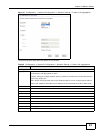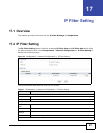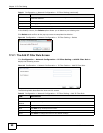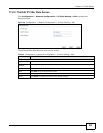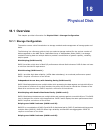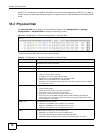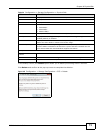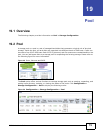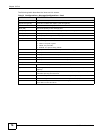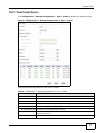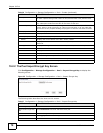
UNS Series User’s Guide 71
CHAPTER 18
Physical Disk
18.1 Overview
This chapter provides information for Physical Disk in Storage Configuration.
18.1.1 Storage Configuration
The section covers a brief introduction to storage methods and management of storage pools and
disks.
The following is a reference guide to help you select a storage method for the various number of
disks supported on the UNS Series. Redundant Array of Independent Disks (RAID) is a storage
method of storing data on multiple disks to provide a combination of greater capacity, reliability,
and/or speed.
Disk Striping (RAID Level 0)
RAID 0 provides a high level of disk I/O performance without fault tolerance. RAID 0 does not have
a minimum hard drive requirement.
Disk Mirroring (RAID Level 1)
RAID 1 provides high data reliability (100% data redundancy) at a reduced performance speed.
RAID 1 requires a minimum of two drives.
Independent Access Array with Rotating Parity (RAID Level 5)
RAID 5 distributes data across multiple disks while protecting the data against a single disk failure.
In the event of a failure of any disk member, the parity will be used to rebuild the contents of the
failed drive on the new one. RAID 5 requires a minimum of three drives.
Disk Striping with Double Distributed Parity (RAID Level 6)
RAID 6 distributes the data across multiple disks and protects against a two-disk failure. This RAID
level is designed for mission critical applications. RAID 5 and 6 display the same performance level.
RAID 6 requires a minimum of four drives.
Striping over RAID 5 volumes (RAID Level 50)
RAID 50 is a combination of RAID 5 and RAID 0 distributed parity (RAID 5) and data striping across
multiple disks (RAID 0). RAID 50 offers high reliability and transfer rate aggregation. RAID 50
requires a minimum of six drives.
Striping over RAID 6 volumes (RAID Level 60)



